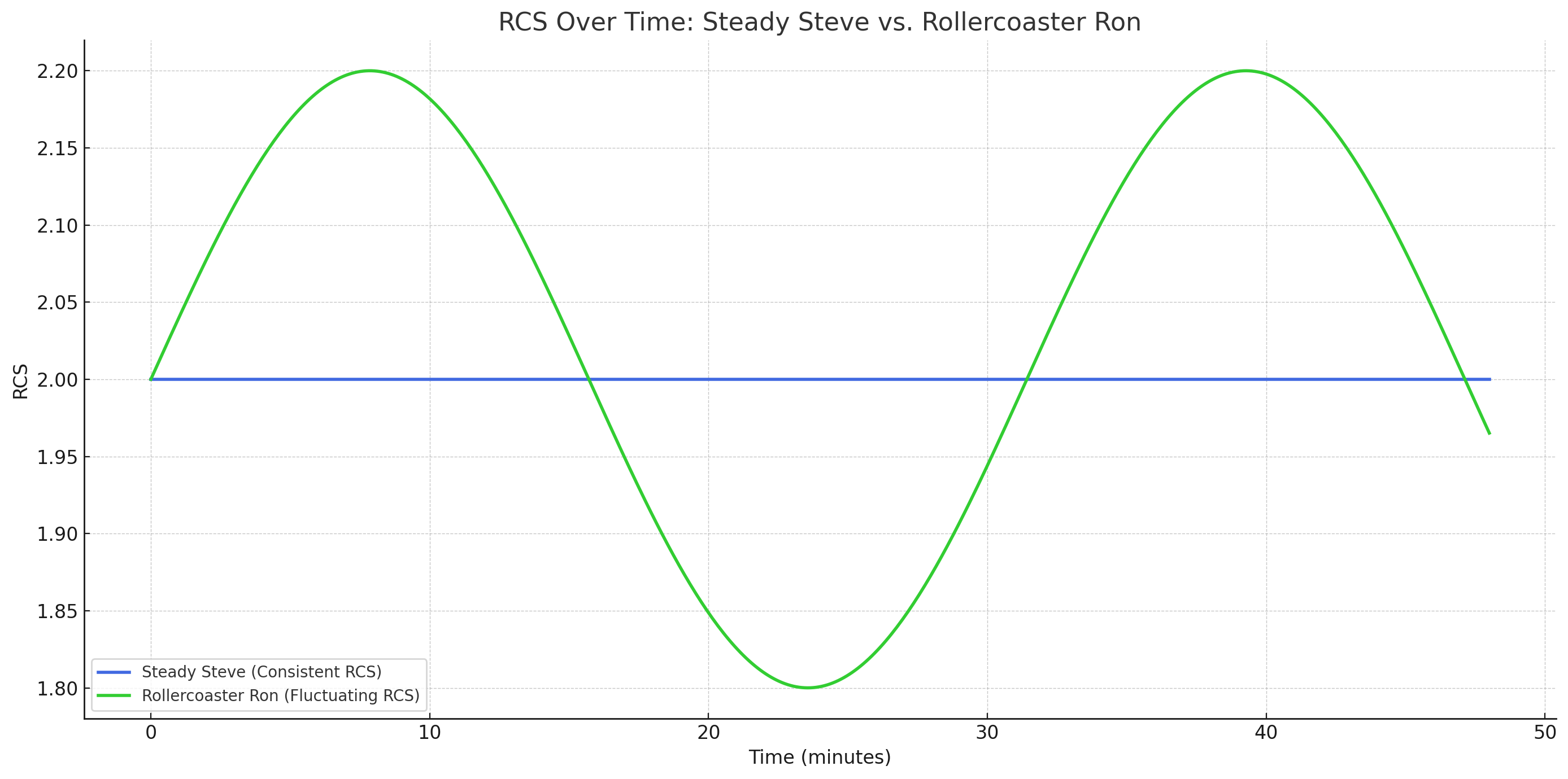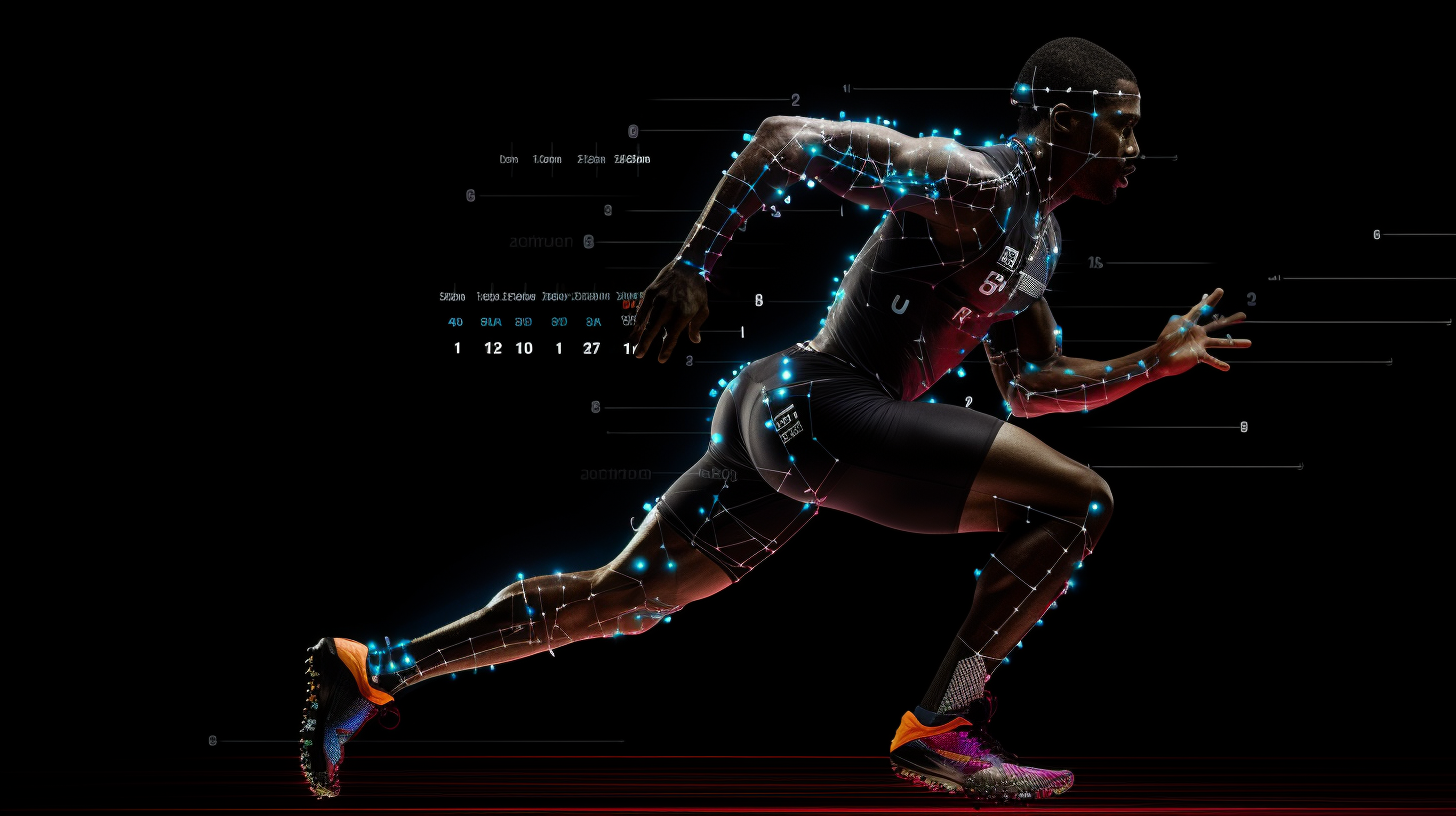Decisions on the Clock: How RCS Measures an Athlete's Cognitive Performance
In a world where the margin between victory and defeat is razor-thin, RCS serves as a cornerstone, guiding athletes towards sustained excellence and helping coaches craft strategies that capitalize on cognitive strengths.

Every athlete, regardless of their sport, finds themselves at the crossroads of decision-making countless times during a game. Whether it's a basketball player deciding when to take a shot, a soccer player choosing where to pass, or a tennis player calculating where to place a serve, split-second decisions are the essence of competitive sports.
But how can one quantify an athlete's prowess in making these decisions? How can we measure not only the speed but also the accuracy of these choices?
Enter the Rate-Correct Score (RCS) - a cognitive metric that evaluates how many correct decisions an athlete can make in a single second. It's not just about speed; it's about speed combined with precision. And in the high-stakes world of competitive sports, this blend of rapidity and accuracy can be the difference between victory and defeat.
RCS in Practice: RCS is a cognitive metric used in cognitive tasks. We suggest performing a cognitive task between training and monitoring RCS to look for the moment it drops during practice sessions. In this article, we will cover an example of how a high and low RCS would look in real life.
The Importance of Consistency in RCS
Consistency is a hallmark of greatness in sports. An athlete who performs exceptionally well in one game but falters in the next is less valuable than one who delivers a consistently good performance across multiple games. This principle holds true, especially in the realm of decision-making.
Imagine the scenarios: A basketball player who consistently chooses the right moments to shoot or pass, a soccer goalkeeper who consistently predicts where the penalty will be aimed, or a tennis player who consistently reads the opponent's serve. These athletes not only make correct decisions but do so consistently, game after game.
The Rate-Correct Score (RCS) plays a pivotal role here. While a high RCS indicates an athlete's ability to make rapid and correct decisions, maintaining this high score consistently over time is where the true challenge lies. An unwavering RCS throughout a game suggests that the athlete's cognitive functions are not only sharp but also resilient to the pressures and fatigue of the game.
In the subsequent sections, we'll delve into the journeys of two athletes. One who epitomizes the art of maintaining RCS, and another whose RCS ebbs and flows, offering insights into the tangible impact of consistency in decision-making.
Spotlight on Two Athletes: Steady Steve vs. Rollercoaster Ron
Basketball, with its dynamic pace and ever-evolving game scenarios, offers a perfect backdrop to observe the Rate-Correct Score (RCS) in action. In the span of a rigorous 48-minute match, we'll focus on two athletes, each representing a unique decision-making style.
It's crucial to note that if an athlete's RCS drops during cognitive training, there's a strong likelihood this decline will manifest in real-life game situations as well. Such observations underscore the importance of monitoring RCS during training to predict and improve in-game decision-making.
The following examples will illustrate the distinctions between an athlete with consistently high RCS, like Steady Steve, and one with fluctuating RCS, exemplified by Rollercoaster Ron.
Steady Steve: The Pillar of Precision
In the midst of roaring crowds and the game's intense moments, Steady Steve emerges as a beacon of consistency. Each pass, shot, and defensive move emanates precision. Throughout the 48 minutes, his decision-making is unwavering. His shots are on point, his passes are well-timed, and his defensive strategies are impeccable. Below is a visual depiction of Steady Steve's unwavering RCS across the game.
Rollercoaster Ron: A Tale of Highs and Lows
On the flip side, Rollercoaster Ron's performance is a thrilling ride of peaks and valleys. There are moments that echo brilliance, where his decisions result in game-changing plays. Yet, there are instances where his RCS dips, possibly swayed by fatigue, pressure, or other game dynamics. The ensuing graph paints a vivid picture of Rollercoaster Ron's fluctuating RCS journey.

Steady Steve (Royal Blue Line): Steve's consistency shines through, with his Rate-Correct Score (RCS) remaining steady throughout the game.
Rollercoaster Ron (Lime Green Line): Ron's RCS showcases the highs and lows, reflecting the fluctuations in his decision-making prowess.
Harnessing RCS for Tailored Training: Monitoring, Analysis, and Action
Athletes are unique, each bringing to the table a distinct blend of skills, talents, and cognitive capabilities. While physical performance is often the focus of training regimens, cognitive agility—how quickly and accurately athletes make decisions—can be a game-changer. Here's where RCS steps in as more than just a metric; it becomes a tool for growth.
Monitoring: Every practice session offers opportunities to assess an athlete's RCS. Through consistent monitoring, coaches can obtain real-time insights into how an athlete's decision-making skills evolve. Questions like "Does their RCS decrease during high-pressure moments?" or "Can they maintain a consistent score throughout a match?" can be answered with continuous observation. For a more detailed analysis, we recommend evaluating an athlete's RCS during their rest periods to identify any potential dips.

Data-Driven Analysis: Armed with a wealth of RCS data, coaches can delve deep into the intricacies of an athlete's performance. Comparing RCS across different cognitive demands can unveil patterns. For instance, an athlete's RCS might consistently dip in tasks involving specific cognitive skills, such as response inhibition or attention.

The Ultimate Goal: The ultimate objective goes beyond merely achieving a high RCS; it's about sustaining it over time. This is exemplified by our earlier illustration with "Steady Steve." By concentrating on personalized cognitive training, athletes can not only excel in their decision-making skills but also maintain that excellence, game after game.

Elevating Sports Performance with RCS
In the fast-paced realm of sports, where every second counts, the Rate-Correct Score (RCS) has emerged as a pivotal tool for athletes and coaches. Beyond being a mere statistic, RCS offers a complete view of an athlete's cognitive performance, capturing both the speed and accuracy of their decision-making.
From our deep dive into the RCS journeys of "Steady Steve" and "Rollercoaster Ron", it's evident that consistent decision-making can be a significant differentiator on the court. But RCS's true power lies in its application. By continuously monitoring, analyzing, and tailoring training regimens based on RCS data, coaches can unlock new avenues of performance enhancement for their athletes.
In a world where the margin between victory and defeat is razor-thin, RCS serves as a cornerstone, guiding athletes towards sustained excellence and helping coaches craft strategies that capitalize on cognitive strengths.
Embracing RCS is not just about understanding how many correct decisions an athlete can make in a second. It's about harnessing that knowledge, refining training approaches, and elevating the very essence of sports performance.
🌐 Connect With Us
🌍 Soma Technologies: Engineered to enhance human performance.
📸 Instagram: Dive into our world through exclusive photos and stories.
👥 Facebook: Join our community for the latest updates and discussions.
📈 LinkedIn: Connect with us professionally and stay informed about industry news.
🎥 YouTube: Watch our latest videos, tutorials.
🐦 X: Follow us for instant updates, news, and engaging tweets.

